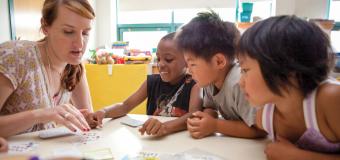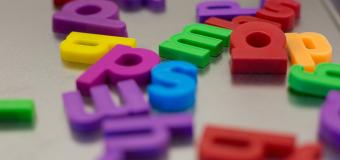All over the United States, schools are impacted by gun violence, either directly or vicariously. Educators are mourning the lives of students, and using precious teaching time to talk about safety strategies and execute code red drills. Parents are worried about sending their children to school. Students are worried, too, and many are marching for gun control. And some people are calling for arming teachers.
Yes, it is critical to keep our schools safe. But if we’re looking to arm teachers, let’s arm them with the compassion, knowledge, and skills they need to teach our children safely. Here are six ways.
1. Arm teachers with knowledge.
In this current atmosphere, added to the already long list of teacher must-knows is what to do in the case of an active shooter. Having a protocol in place is empowering, but that’s not where it ends. Recent studies show that building strong relationships and creating child-centered environments not only positively impacts student achievement, but also improves classroom culture.
Students with adverse childhood experiences may have a diminished ability to learn, build relationships, and regulate behaviors and emotions. Many children live with complex trauma, requiring schools to work collaboratively to ensure safe and supportive environments where all children are recognized, heard, and nurtured. Teachers who understand the impact of trauma on learning are better able to develop trauma-sensitive schools by selecting literature to inspire critical dialogue, developing caring routines, and teaching social and emotional skills. There is power in teaching.
2. Arm teachers with a desire to understand.
In an optimal learning environment, teachers approach students with an open heart and an inquisitive mind. Instead of a knee-jerk reaction to disruptive behavior, we can take a moment to wonder what is driving the behavior, and open up space for learning.
Punishment may inhibit a student’s ability to learn from the moment. Giving children space to share emotions helps us understand their motivation. Restorative discipline practices like collaborative problem solving, the circle process, or peer mediation all start by asking questions.
We can also help students develop the ability to question and understand other perspectives. Questioning is essential to developing engaged citizens who understand complexity, are comfortable with tension, and take risks in honest dialogue. There is power in questioning.
3. Arm teachers with ways to create inclusive environments.
Classrooms are microcosms of greater society. Often, students who seem different because of ability, language, race, gender identification, or worldview, are isolated. Schools can strive to give voice and value to all students. We can also infuse social justice and linguistically and culturally sensitive pedagogy into every lesson. We can cultivate courageous conversations, encourage unlikely friendships, and nurture sensitivity and perspective taking. We can teach restorative justice and nonviolent civic participation. There is power in diversity.
4. Arm teachers with resilience.
Teachers often feel powerless, navigating mandates and trying to nurture safe environments while sometimes dealing with violent outbursts or aggressive behaviors. Left unchecked, this can spiral into compassion fatigue, burnout, and depression. Learning self-care is critical. When we practice seeing ourselves with compassion, love, and acceptance, we give permission for children to do the same.
Practicing a mindful awareness of ourselves and our environment can lead to a shift in how we see and interact with ourselves and our students. When we use affirming language with our students, we instill positive self-talk that they can carry with them forever. When we are kind with ourselves, we see unwanted behaviors as opportunities for growth. There is power in mindfulness.
5. Arm teachers with voice and leadership.
Students are leading nationwide protests against gun policies. When we give children space to find their own voice, we allow them to know themselves and feel like they have the power to make a difference. The telling of a story is healing for both the listener and the person telling it. Responding to injustice builds community, strengthens critical communication and problem solving skills, and deepens relationships.
The calls to action by marching students are powerful. Jack Gillette, former dean of the Graduate School of Education, reminds us that it took the pain of mothers whose children were killed by drunk drivers to change a nation’s laws. There is power in social action.
6. Arm teachers with professional learning communities.
A first year teacher reports, “I had a nightmare of an active shooter in my school and although we thought we were prepared I woke myself up in fear. In this dream I was counting my children and I couldn’t remember what number I was on.” This anxiety is real. Teachers feel responsible for the safety of their students. It is critical that educators discuss their fears, hopes, and successes with colleagues, and find social and emotional learning strategies.
Schools that model integrity, kindness, and cooperation feel more safe and secure. Teachers who have strong professional relationships do not feel alone in times of stress and crisis. There is power in compassion and love.


